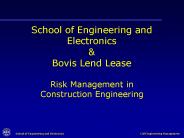Engineering a simpler pheromone response pathway - PowerPoint PPT Presentation
Title:
Engineering a simpler pheromone response pathway
Description:
... CYC1 terminator ... Custom 3' sequence. 5' sequence, with binding sites for Ste12, ... Ste2 3' sequence. Next steps. Do some actual lab work. Planning to ... – PowerPoint PPT presentation
Number of Views:28
Avg rating:3.0/5.0
Title: Engineering a simpler pheromone response pathway
1
Engineering a simpler pheromone response pathway
- Alex Mallet
- Endy Lab
- MIT
2
Regulation of pheromone pathway (Dohlman and
Thorner, 2001)
3
Transcriptional complexity
- Transcriptional response
- 200 genes upregulated, 200 genes downregulated
after exposure to pheromone (Roberts et al, 2000) - Transcriptional regulation
- Ste12 binds to 115 promoters on exposure to
pheromone (Zeitlinger et al, 2003) - Some mating genes are induced by pheromone,
others arent - Some mating genes are cell-cycle regulated eg
Fus1, Sst2 - Positive and negative feedback loops (eg Ste2,
Sst2) - Feedforward loops e.g. Ste12 -gt Kar4 Ste12, Kar4
-gt Kar3 - Multiple types of regulation for single gene eg
Sst2, Fus1
4
Complexity of genomic organization
Chr I
(100kb bins)
Chr II
Chr III
Chr IV
Chr V
Chr VI
16 genes involved in signal transduction pathway
from Ste2 to Ste12 are scattered across 10
chromosomes
Chr VII
Chr VIII
Chr IX
Chr X
Chr XI
Chr XII
Target promoters identified by Zeitlinger et al
are scattered across all 16 chromosomes
Chr XIII
Chr XIV
Chr XV
Chr XVI
5
Complexity is undesirable
- Difficult to understand, even qualitatively
- E.g. which bits of regulation are essential ?
- Difficult to model accurately
- Difficult to manipulate experimentally
- Hard to manipulate many genes at once
- Hard to control multiple genes simultaneously
6
Proposed project
- Re-engineer pheromone pathway for simpler
transcriptional characteristics and experimental
manipulation - Custom (simpler) transcriptional control
- Get rid of cell-cycle regulation
- Get rid of feedback loops
- Express genes from custom constitutive or
inducible/repressible promoters - Simpler response
- Remove genes known to be involved in, but not
essential to, mating - Easier to manipulate
- Put all genes involved on single plasmid/YAC
- Subdivide pathway divide genes into independent,
separately-inducible/repressible subsystems (eg
ligand manufacture and export subsystem, MAPK
cascade subsystem)
7
Motivation
- Simpler pathway is easier to model and manipulate
- Engineered GPCR-MAPK cascade signal transduction
system can be reused - Getting rid of (some of) the regulation will tell
us how essential these levels of regulation are - Validation of existing state of knowledge about
genes involved in yeast mating response - Engineering lessons in
- Building a large pathway
- Designing independent subsystems and getting them
to interoperate successfully in yeast - Designing a debuggable pathway
8
Some proposed subsystems and changes
- Receptor subsystem Ste2
- Remove cell-cycle, Ste12, Mcm1 regulation
- Pheromone manufacture and export Mfa1, Mfa2,
Ste6, Bar1 - Remove cell-cycle, Ste12 regulation
- G-proteins Gpa1, Ste4, Ste18
- Remove Ste12 regulation of Gpa1
- Remove Sst2 phosphatase regulation of Gpa1 (knock
out Sst2 or remove Ste12 control of Sst2)
9
Example re-engineering Ste2
- Wild-type Ste2
- Re-engineered Ste2
- Custom 3 sequence CYC1 terminator
- Custom core promoter CYC1 core promoter and 5
UTR, with single TATA box - Custom UAS contains binding motif for single TF
(currently based on database of 100 motifs, will
expand using TRANSFAC)
5 sequence, with binding sites for Ste12, Mcm1,
Dig1, Fkh1
Ste2 coding sequence
Ste2 3 sequence
Custom UAS for single TF e.g. TetR
Custom core promoter
Ste2 coding sequence
Custom 3 sequence
10
Next steps
- Do some actual lab work ?
- Planning to start with Ste2
11
Acknowledgements
Molecular Sciences Kirsten Benjamin Richard Yu
MIT Endy Lab Natalie Kuldell
Harvard Fred Winston
U. of Washington Stan Fields
Funding MIT CSBi PhD Program
12
Questions, comments ?
13
Backup
14
Pheromone response regulation
- Pheromone response is subject to many layers of
regulation - Phosphorylation/Dephosphorylation
- Transcriptional regulation
- Protein stability
- Receptor endocytosis
- Protein localization
- Ligand export and degradation
- My focus is on the transcriptional
characteristics of the pathway































